When it comes to setting up and maintaining a fish aquarium, you might find yourself dealing with worms in fish aquarium ecosystems sooner or later. Whether they’re crawling on the substrate or swimming in the water, these critters can provoke mixed feelings among fish enthusiasts. Some people fret about the potential dangers, while others appreciate the benefits worms can offer. In this article, we’ll navigate the different types of worms, their roles in the ecosystem, potential dangers, and management tips, so you can make informed decisions about your fish tank.
Understanding the Different Types of Worms in Fish Aquariums
Many folks might not realize it, but various types of worms can be found in aquariums, each with its unique characteristics and roles.
Nematodes
These tiny, roundworms can create quite a stir when they appear in your aquarium. Some species are beneficial as they help break down organic matter, promoting a healthy ecosystem. However, others might infest your fish, leading to infections. Being able to identify the good from the bad is crucial to maintaining balance.
Planaria
Flatworms like Planaria are often found in aquariums, primarily as a result of overfeeding. These little guys have remarkable regenerative abilities, which can be fascinating to observe. While they’re generally harmless, their presence can indicate an underlying issue, such as excess waste or decomposition materials. Addressing feeding habits can certainly improve your aquarium’s overall health—either by reducing food intake or adequately cleaning the tank.
Blackworms
If you’re looking for a live food source, blackworms can be a great option. These worms provide essential nutrients and can enhance your aquarium’s ecosystem when managed correctly. They also serve as an excellent option for feeding fish like freshwater sharks, boosting their growth and vitality.
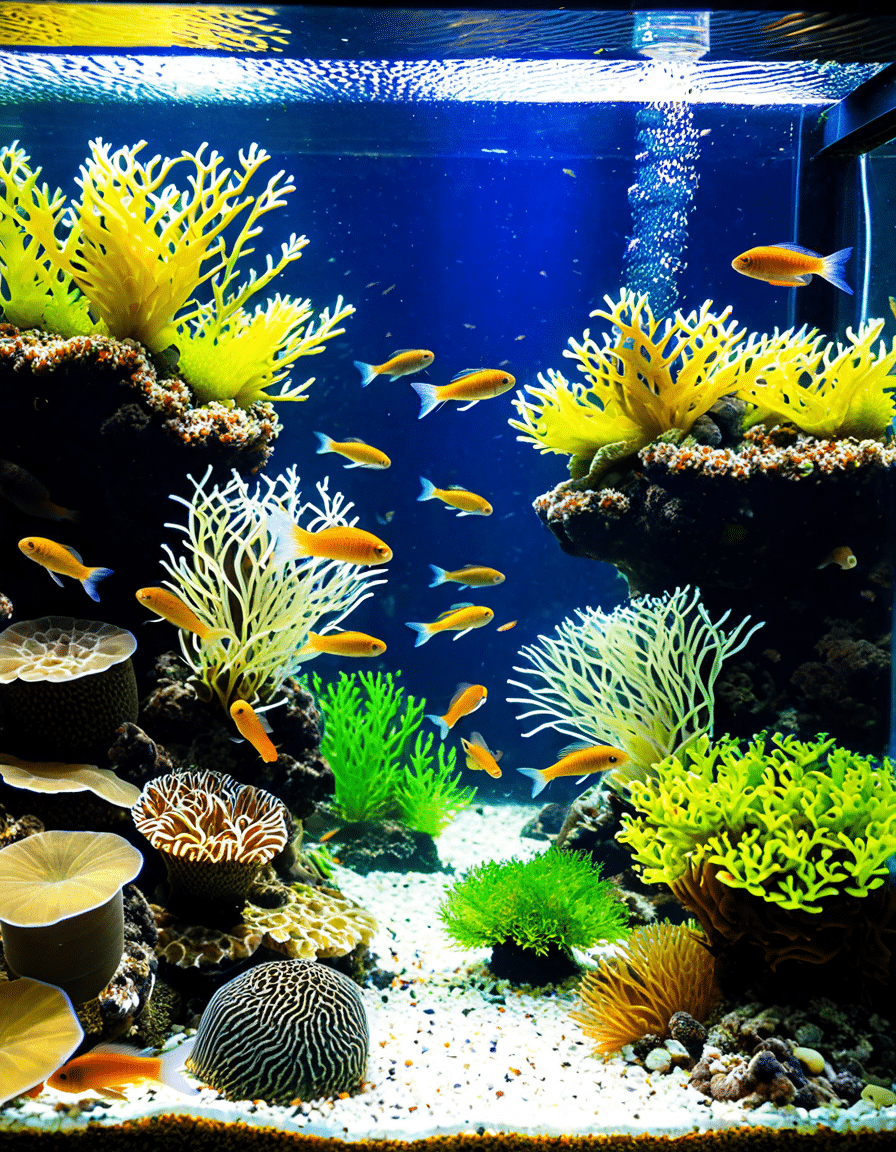
The Role of Worms in Enhancing Aquarium Ecosystems
Worms in fish aquariums can play crucial roles in maintaining a balanced environment, fostering a healthy aquatic community.
Natural Detritivores
Worms can contribute to the overall health of your aquarium as natural detritivores, breaking down waste and promoting the cycling of nutrients. This helps avoid toxic buildups, making it essential for the longevity of the tank. Healthy water quality supports not just fish but plants benefitting from the ecosystem.
Nutritional Benefits
Live worms can be a nutritious food source for delightful fish species like the Red-Tailed Black Shark. In their juvenile phase, these fish require an array of essential nutrients to grow strong and healthy. Supplementing their diet with live foods like worms cultivates a happier, more vibrant aquatic community.
Impact on Plant Health
Introducing worms can significantly benefit plants in the aquarium. They aid in nutrient absorption and ensure healthy root systems, particularly for popular aquatic plants like Anubias and Java Fern. This symbiotic relationship allows both the plants and fish to thrive, creating a well-rounded ecosystem.
Assessing the Dangers of Worms in a High pH Aquarium
While worms can provide benefits, they may pose threats under certain conditions, especially in an aquarium with high pH levels.
Effects on Water Chemistry
In aquariums with elevated pH, certain worms may proliferate excessively. This explosion of population can disrupt the delicate balance essential for fish and plants to survive, leading to detrimental water quality. Being aware of your water’s chemistry is vital at all times.
Potential for Disease Transmission
Nematodes can have adverse effects on fish health, increasing stress levels and posing the risk of transmitting parasites. Regular health checks and monitoring your fish can ensure that any potential issues stemming from worms are caught early.
Stress Levels in Fish
Worm populations can introduce stress for fish, particularly if they’re infested. Esteemed fish species such as tropical freshwater sharks need a low-stress environment to thrive. Keeping an eye on worm populations helps maintain a peaceful habitat conducive to healthy, happy fish.
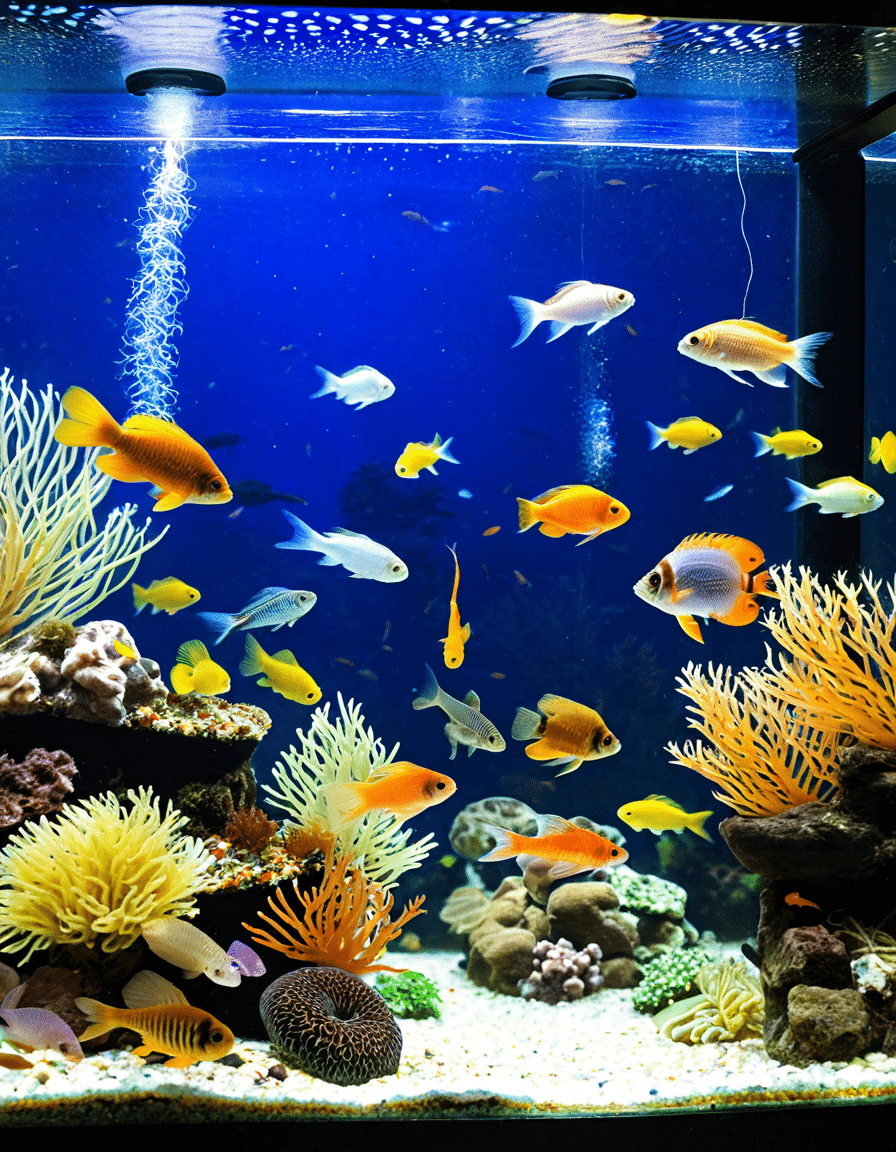
Top 5 Types of Worms You Might Encounter in Aquariums
Many aquarists have had encounters with various types of worms. Here’s a list of five you’re likely to run across, along with a brief overview of each.
Strategies for Managing Worm Populations in Aquariums
Keeping worm populations in check can be a straightforward process with the right strategies.
Regular Water Changes
Making regular water changes is one of the most effective strategies for controlling unwanted worm populations. Clean water helps maintain optimal conditions in both saltwater for aquarium and freshwater setups, thus managing overall worm presence.
Balanced Feeding Practices
Overfeeding is one of the leading causes of worm infestations. By following balanced feeding practices, you control organic waste accumulation, reducing the chance of unwanted worm growth. Make sure to feed your fish what they can eat in a few minutes, monitoring their intake closely.
Introducing Live Plants in Your Aquarium
By planting live aquarium plants, you stabilize water parameters and create a competitive environment for reducing worm populations. Additionally, plants like Hornwort can thrive alongside worms while enhancing your tank’s aesthetics.
Worms and Their Relationship with Plants in the Aquarium
Worms and plants often share a mutually beneficial relationship, contributing to a balanced ecosystem.
Mutual Benefits
Worms can aerate the substrate and enrich it with essential nutrients, promoting healthy plant growth. This support is especially vital for delicate species like dwarf grass, which thrive on proper nutrient availability.
Companion Plantings
Selecting compatible plants for your aquarium can also help manage worm populations. Tough aquatic plants can withstand worm activity and even flourish in their presence. By strategically planting various species, both fish and plants prosper together.
A Balanced Approach
It’s vital to assess the relationship between worms and plants constantly. By understanding these dynamics, you can create an aquarium that thrives together, allowing for conservation of both fish and plants in a unified ecosystem.
Thoughtful Reflections on the Role of Worms in Aquatic Environments
The presence of worms in your fish aquarium is a complex issue that involves countless variables. While some may seem threatening, it’s essential to recognize the positive ecological roles many worm species provide. Understanding these dynamics helps cultivate a thriving aquatic environment for fish and plants alike.
Incorporating the right worms in your aquarium can help enrich the ecosystem when managed thoughtfully. Whether you’re nurturing freshwater sharks or focusing on aquatic plants for aquarium setups, comprehending the intricate relationships is key to success. So, as you venture into aquarium ownership, remember that a balanced view of your inhabitants, including worms in fish aquarium, will equip you for thriving aquatic endeavors.
Worms in Fish Aquarium: Dangerous or Beneficial?
The Role of Worms in the Ecosystem
Worms in fish aquariums can cause quite the stir! Many hobbyists wonder whether these critters are a pest or helpful allies in maintaining a balanced aquatic environment. Surprisingly, some worms, like detritus worms, are beneficial for your tank, helping to break down organic matter and recycle nutrients. This little ecosystem is similar to how a fluffy Siamese kitten brings a playful energy to a home, creating balance and joy. Just like picking the right costume for a night out, understanding your worms’ role sets the stage for a thriving aquarium.
However, not all worms are benign. Some may signal problems, like excess waste or overfeeding. A sudden increase in worm population can change the dynamics of your aquarium. So if you spot an outbreak, think of it like when my dog swallowed a chicken bone—it’s a call to action! Make sure your fish are healthy and that there’s a robust cleanup routine in place to keep things on the up and up.
Identifying Worm Species
Now, you might be wondering how to identify different types of worms. Identifying whether you’ve got beneficial or harmful species can be tricky! Some look like tiny white specks near the substrate, while others, like planaria, can be more visible and even alarming. An interesting tidbit: some planaria can live for years and regenerate body parts, showing resilience akin to the fox 13 Utah team’s coverage of unusual local stories. Maintaining awareness of what’s in your tank will make all the difference!
Community knowledge is key here. Engage with fellow aquarists to share experiences and tips. You never know when someone might drop a gem of wisdom that helps you manage your aquarium more efficiently! Just like dressing up in trio costumes can bring a smile to your friends, sharing your aquarists’ stories creates connection and community in your fish-keeping journey.
The Bottom Line: Weighing Risks and Benefits
In the end, worms in fish aquariums can either be your best friends or uninvited guests, depending on their type and number. It’s vital to monitor their population and health, ensuring your aquatic family thrives. To keep your aquarium on the right track, research is paramount—after all, it’s just like understanding the hazbin hotel cast; each character plays a crucial role! The knowledge both you and your fish can gain from a little observation and care is priceless.
Always keep learning and sharing within the community. Those little tidbits, just like an apricot mini poodle frolicking in the grass, can inspire and motivate you to refine your techniques. In this ever-changing hobby, worms can either be a burden or a boon—it’s up to you to set the stage for success!
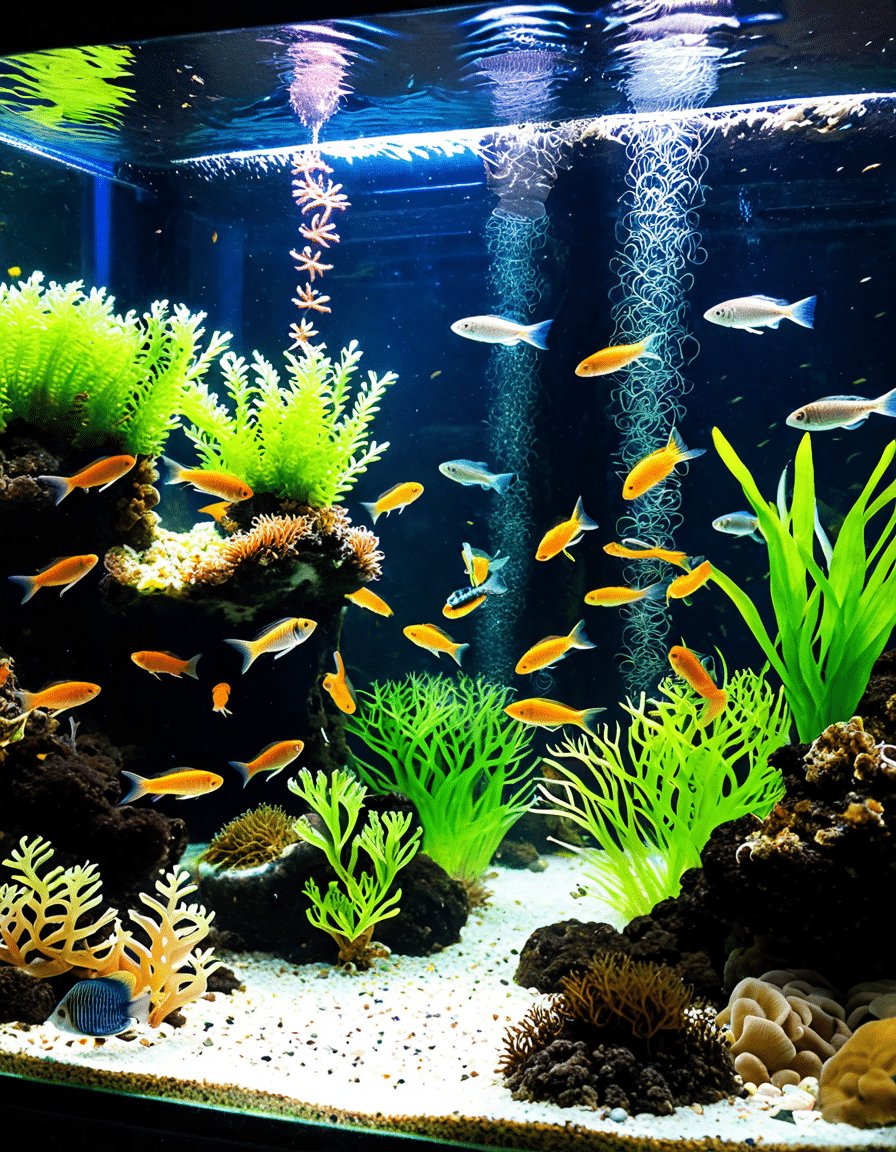

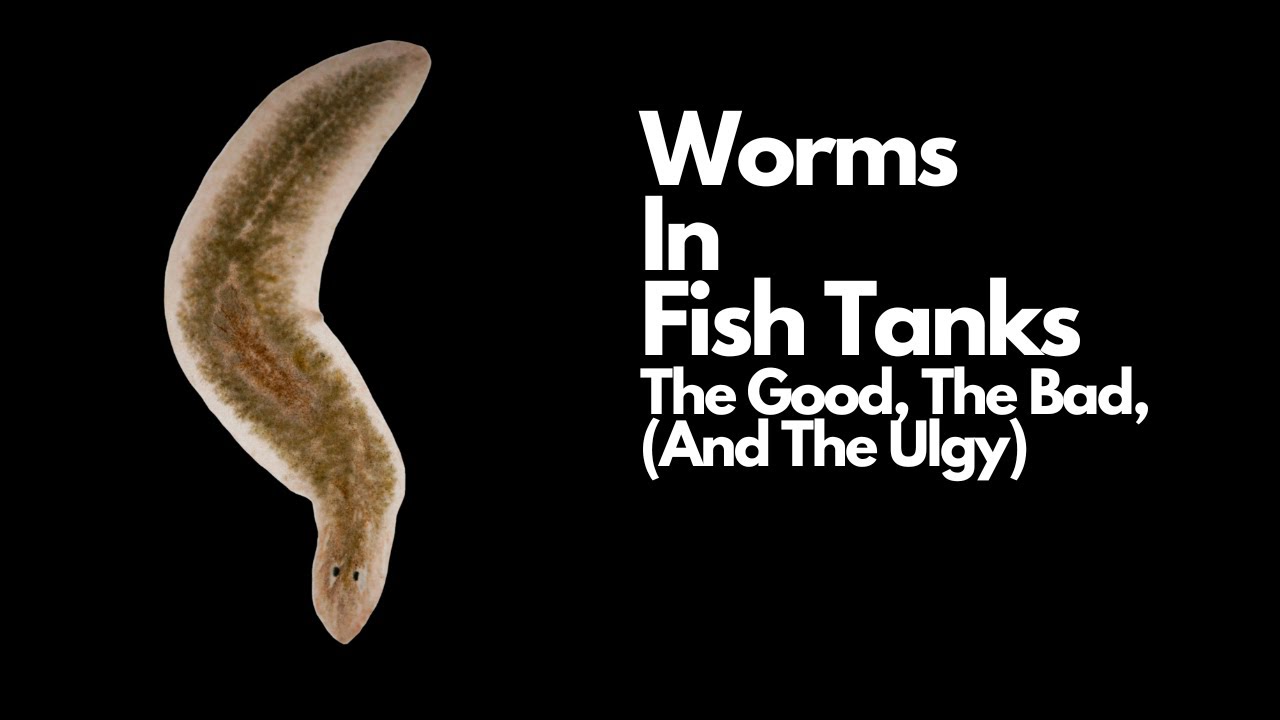
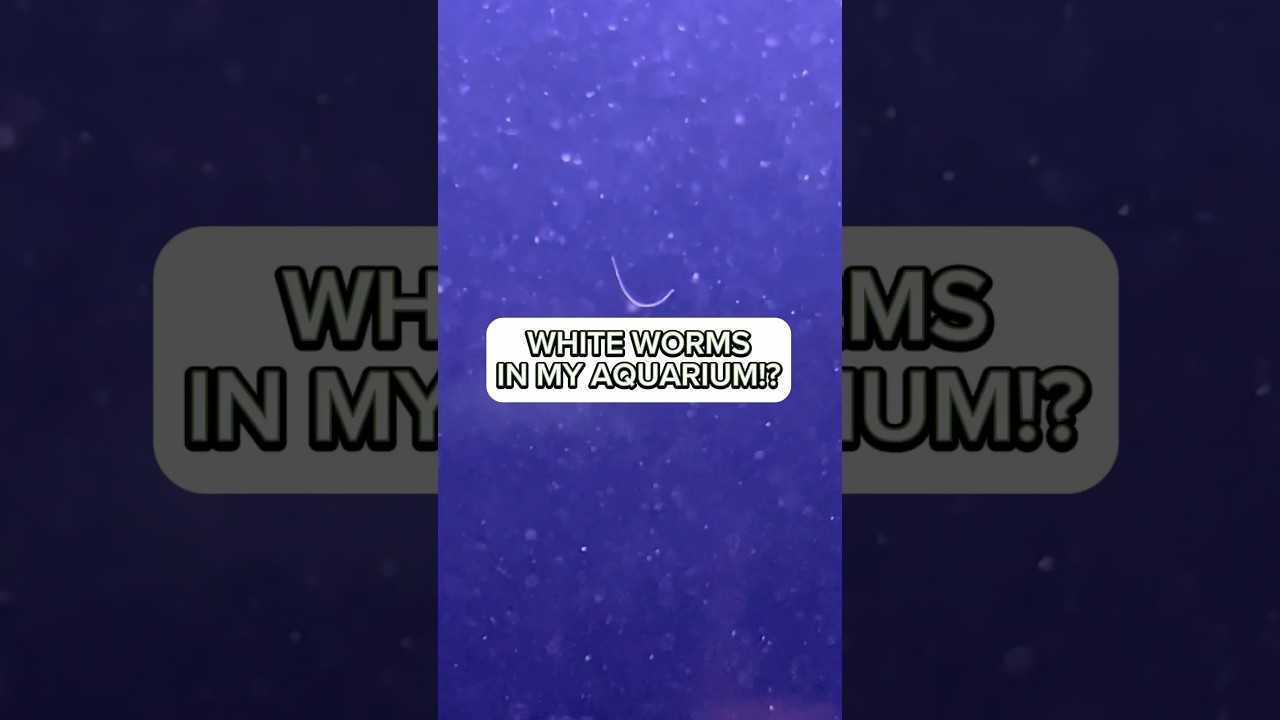
![I HAVE WORMS in my FISH TANK ] PANIC? or Don't PANIC?](https://www.petsdig.com/wp-content/cache/flying-press/8d77b1658f0a63c0268534c4645cb8b0.jpg)

